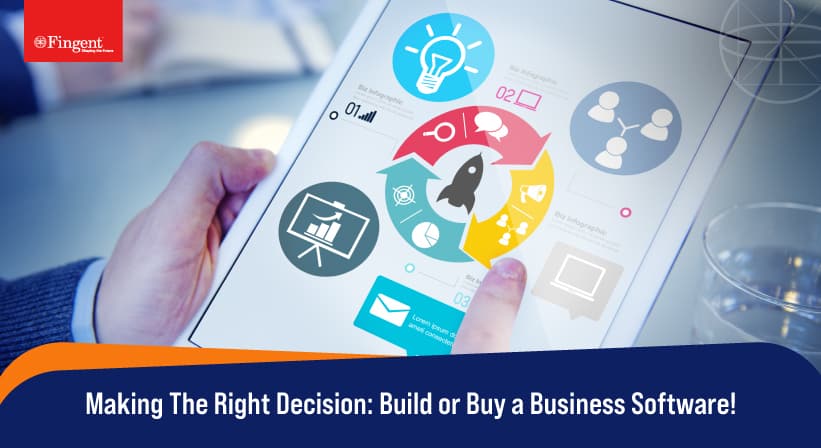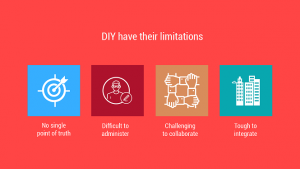Building Your Own App Without Writing a Line of Code
More and more enterprises seek to ride the mobility wave towards improving their efficiency and becoming more competitive. Gartner estimates enterprise app demand to grow about five times faster compared to the internal capacity of IT organizations, by 2017. Today’s digital employee use an average of three different devices in their daily routine, and with the spread of IoT and wearable devices, this number is set to increase to five or six devices a day. Mobile phone sales are expected to touch 2.1 billion units by 2019, fueling demand for enterprise apps.
Enterprises find it a challenge to develop, deploy and maintain mobile apps to match the ever increasing demand, leave alone being proactive to preempt competition.
An earlier Gartner survey on mobile app development, conducted in 2014, reveals a majority of organizations have developed fewer than 10 apps, with a good majority of them not having released any mobile apps at all.
Many enterprises grossly underestimate the time and resources required for developing mobile apps, especially the time taken for integration. They find the coding part especially vexatious and arduous. Moreover, hiring developers with good mobile skills is becoming progressively difficult and costly.
Rapid Mobile Application Development Approaches

Enterprises need to develop mobile apps, and develop it fast, to keep pace with the enterprise app demand. They need to use development tools capable of producing apps rapidly, to reduce the gap between demand and supply.
Solutions are in sight though. Significant innovation, mostly through powerful Rapid Mobile Application Development (RMAD) tools is fast replacing native development tools and traditional coding approaches.
RMAD is generally implemented through an effective two-pronged bimodal approach. The first mode involves the creation of stable infrastructure and APIs that enable apps to retrieve and deliver data to back-end systems seamlessly, without disrupting enterprise applications. The second prong involves the deployment of agile approaches to quickly deliver front-end app features required by the business.
The RMAD approach generally starts with requirement gathering through workshops or focus groups, prototyping an early iterative model using no-code or low-code platform, end users testing the design, and reusing software components to the extent possible during the main development phase. Visual development tools like MDD further facilitate iterative, rapid, and collaborative design, with developers able to share prototypes, gather feedback, and refine the requirements.
Several Rapid Mobile Application Development (RMAD) approaches, such as drag-and-drop code-less tools, automated code generation, model-driven development, virtualization, construction of forms, and other methods allow people with little or no coding skills, especially business managers and those with business facing roles to develop applications on-the-fly, and iterate on these designs.
Low-Code and No-Code Platforms

Such low-code and no-code platforms do away with the need to code by offering declarative development options such as drag-and-drop visual interfaces, point-and-click tools, object mapping, process modeling, form builders, WYSIWYG editors, and other options. Even the few lines of code involve standard languages commonly in use, such as JavaScript, SQL, CSS, and more. These languages are familiar to anyone who has a decent level of education in IT.
Most of these platforms enable creating an app quickly and then layering customization and added features on top of it. Using these options, enterprise users may develop their own apps without writing a line of code, or keeping code to a minimum, for any optional customization.
Such declarative development options are popular in several areas of application development, such as
- Logic, criteria, and filtering
- User interface
- Reports and Data Visualizations
- App roles and authentication
- Data import and export rules
- Integration with other apps and systems
The best low-code platform offers step-by-step workflows for most application authoring processes. Point-and-click tools, for instance, guide the user through each step of the process, enabling keeping things in context. Other tools may enable connecting the application with an internal corporate directory such as Microsoft Active Directory, to facilitate single sign-on integration.
Low code platforms also come with much integration in-built as well. A common and very popular integration is online data storage services such as Dropbox, Microsoft OneDrive, Google Drive, and more.
Low code platforms offer various approaches, with the space rife for innovations. A model-driven development (MDD) approach, for instance, uses visual models for defining data models, application and process logic, user interfaces, and other elements.
Limitations of DIY App Development Platforms
Codeless development brings IT the business together, facilitating more rapid, iterative, flexible, and collaborative development. However, it still pays to enlist the services of a professional enterprise app development company. Low-code platforms, for all the ease and automation it offers, do not eliminate the need for programming completely, and no-code platforms still have several inherent limitations for enterprise use. For instance, these options are specifically weak on integration and user interface, especially mobile UI.
DIY app development platforms are definitely worth a try if these are your baby steps towards the app development world, and your app does not handle critical tasks. However, if you are remaking an app, and wants it to handle mission critical functions, or is customer facing, it may not be worth the risk to go for DIY. Due to limited options available, you will have to either adjust the app according to what is available or seek a real developer’s help to add the extra functions that are not available within the platform.
If you don’t want to take a chance in your enterprise application development, partner with established custom software development companies such as ours, to be assured of a complete web application, with custom layout, ability to access servers on the device, pixel-perfect displays, and much more. You gain from our experience and expertise spanning across several projects, cutting across industries and sectors.
Stay up to date on what's new

Recommended Posts

10 Feb 2024
Why Are Leading Businesses Prioritizing Application Modernization
The world of technology is evolving at a fast pace, with newly emerging advanced applications almost every day. With the significant growth of technology, we can also witness the transition……

10 Oct 2023 B2B
Guarding Your Digital Fortresses: The Imperative of Application Security
In the ever-evolving landscape of cybersecurity, application security stands as the impervious armor that shields your organization's digital fortresses. Imagine your organization's applications as the kingdom's gates – if left……

20 Jan 2023 B2B
Build or Buy a Software Solution: Know Your Options!
The right software can serve as a growth catalyst for your business. A robust software solution can empower your team to work more efficiently, better serve your clients, and optimize……

31 Dec 2021 B2B
A Comprehensive Guide to SaaS Application Development
Software as a service (SaaS) is a fast-growing IT segment that commands the highest adoption rate among public cloud services, such as PaaS, IaaS, BPaaS, and others. In 2020, the……
Featured Blogs
Stay up to date on
what's new





















































